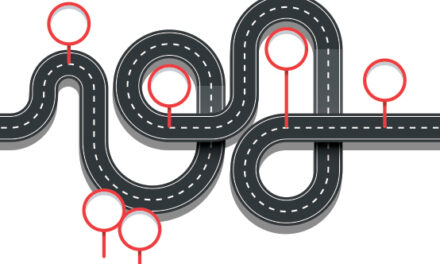
All teachers can add to their classroom management toolkit by reflecting on the lessons they learned early in their careers.
Doug Lemov’s Teach Like a Champion (2010) examines the work of teachers whose students have higher than expected test scores — providing valuable insights. Meanwhile, I sit in the back of student teachers’ classrooms watching disaster after disaster unfold before me. Here are some vignettes from my supervision notes:
- Student has been loudly sharpening his pencil for three minutes; only ended because he ran out of pencil.
- Student left the room to go to the bathroom 32 minutes ago. I believe she is hiding under the coat rack in the hall.
- Four students are crawling under desks.
- Teacher just gave student her third warning before having her move her stoplight to yellow – A WARNING!
- Two students are physically fighting in their chairs at the back of the classroom. How is it possible to fight entirely below desk level while seated?
I am a professor and student teaching supervisor at a selective liberal arts college. Most of the student teachers I observe are quite successful, so these are not representative, rather illustrative. In each of these vignettes, my student teachers were earnestly teaching most of their students — not effectively, but earnestly. I wonder how it is possible that preservice teachers who have had four years of practical experiences, numerous education courses, and a course that explicitly addresses classroom management can struggle so mightily with managing a classroom.
Yet I am reminded of my first time being videotaped while teaching, and I am humbled. The year was 1995. Picture a room filled with 32 4th-grade students arranged in groups of three or four. I am the earnest teacher at the front of the room teaching a lesson that should have lasted 10-15 minutes, energetically teaching for nearly 45 minutes. Four students are remarkably engaged, but I have no idea what the other 28 students are doing. My cooperating teacher sits in the back of the room, probably cringing as he records the session. When it’s over, he requests only that I sit down and watch the video with him.
I wonder what sadistic enjoyment he hopes to take from this, but I agree. We sit down after school and put the VHS tape in the VCR. It’s not that bad — for the first five minutes. Then, I actually get bored watching myself. Then at about the 28-minute mark, without me noticing, the camera slowly pans to the left side of the room, which should have been in my peripheral vision. A male student was lying with his entire body parallel to the floor on his desk for nearly five minutes, and I was never aware of it until I saw it on video.
One of the greatest divides between expert and novice teachers is the way in which they direct groups of students.
There is a great divide between experts and novices (National Research Council, 2000). Whether we call it classroom management, facilitating a learning community, or effective instruction, one of the greatest divides between expert and novice teachers is the way in which they direct groups of students. I have learned a great deal from reflecting on my practice over the past 18 years and from watching student teachers struggle and succeed in their classrooms. Our program places student teachers in urban, suburban, rural, and international schools. Classroom management in these diverse contexts tests student teachers’ flexibility, skills, and knowledge. The following seven recommendations include techniques, strategies, dispositions, and habits of mind that seem to make my beginning teachers more successful. Based on my experience and what I’ve observed from veteran teachers, these observations apply for us as well.
#1. Maintain a growth mindset.
Carol Dweck (2006) writes eloquently about the need for teachers to have a growth mindset when we consider students. A growth mindset allows teachers to see students’ potential and does not view intelligence as a fixed entity. One of the best ways we can have a growth mindset as teachers is to have that same mindset with regard to our growth as teachers. Noncognitive factors such as grit have been highly correlated with success (Duckworth, Peterson, Matthews, & Kelly, 2007). If this is a trait that we hope to develop in students, then we too must model perseverance. We always should expect great things of ourselves and our students; we cannot give up when our classrooms do not run with the clockwork precision that we envisioned.
#2. Reflect — then reject, accept, or modify.
In order to grow, we must be willing to try new strategies, to reflect, and then to decide if and how we will proceed. We must collect evidence on the practices we try. Are students more engaged? Are they learning more? How do we know? These are powerful questions to ask beginning teachers, but they’re good questions for accomplished teachers as well. If we’re going to collect evidence, then we also need to be ready to admit when something doesn’t work and to shift course midstream. This can happen over the course of a career, year, unit, or lesson. For example, if a lesson is going off the rails, take a moment to stand silently, collect your thoughts, lower your heart rate, and then redirect. Once you have a clear direction in mind, you can speak. In the meantime, silence can be powerful.
I recently observed a student teacher in a 5th-grade class use lines from “The Lego Movie” to her advantage. To get their attention, she would say, “Everything is,” and the students would respond with “Awesome.” This worked very well the first day but then began to backfire the next day because students descended into singing the entire song or became increasingly loud. After talking to the students, she modified the strategy by having them respond with silence when she mentioned the film’s super-weapon, the Kragle.
One strategy I share with students is to tap into positive peer pressure. In my 5th-grade classroom, I used a magnetic Elvis on my front board. When the class started to get too loud, I removed one piece of clothing from the King (swimming shorts were part of the picture and were not removable). Each piece of clothing represented time lost from our 15-minute Friday afternoon class recess — one of my favorite parts of the week where I could relive my kickball glory days. That coveted 15 minutes at the end of each Friday was precious. Students got to the point where they would quiet each other down if I even started moving toward Elvis. Yes, undressing Elvis as a classroom management strategy is a bit odd, but it was just quirky enough to work as long as I used it consistently.
We cannot give up when our classrooms do not run with the clockwork precision that we envisioned.
#3. Employ extrinsic motivation.
I dream of the intrinsically motivated students Alfie Kohn (1994) has been describing for over two decades. I teach idealists — something I hope all beginning teachers are — and so they dream of tapping into the intrinsic motivation that can drive students to amazing outcomes. We try to create environments that move past anarchy, beyond the teacher as the boss, and even cooperative classrooms, to democratic learning communities (Marshall, 2007).
However, I know in my 12 years of teaching that I rarely achieved a democratic learning community filled with students who joyfully learned for the sake of learning — the only true form of intrinsic learning. Students motivated by going to college or getting a job are being motivated by delayed extrinsic rewards, and that is not a bad thing. Therefore, I encourage beginning teachers to tap into good extrinsic motivators for their students with the hope that students will also find the joy of learning.
For example, in my 7th-grade science lab, I used science as the reward for good science. Teams of two to four students earned points throughout each quarter for quality lab work, solid cooperation, and good performance in review games and class. At the end of each quarter, any team that had earned the requisite number of points specified at the beginning of each quarter got to participate in extension labs that went beyond the science curriculum. These labs ranged from making colloids and dissections to building carbon dioxide-powered cars. Teams that did not earn the requisite number of points spent the week in the library writing one- to two-page reports on the science concept undergirding the labs for that week. Beginning teachers see this as overly harsh, and yet I typically would only have one group a year that would endure this at the end of the first quarter. After that, when students knew I was serious and that the labs were a lot more interesting than the reports, every team earned the requisite number of points.
#4. Hold their attention.
In my experience, most classroom management issues are eliminated when students are actively engaged in their learning. Engagement in the classroom typically means the teacher or some form of media is performing while students are passively receiving that entertainment. When I watch beginning teachers facilitating learning in classrooms where students are interested, thinking, and actively applying new learning, off-task behaviors diminish. This may seem to be common sense, but it is a necessary reminder for beginning teachers who believe classroom management is a mystical level of nirvana to be achieved without regard for content or pedagogy.
Review games are a perfect example of how to give students reasons to engage. Games go well when all students have a reason to participate. In my games, I ask multiple questions of all students at one time, give them time for team collaboration, and then randomly select teams or buzz them in so a rotating spokesperson gives the answers. The game manages itself, as all games should, as students want to compete using the basketball hoop, putting green, football toss, rubber-band cannon, or remote-control driving course in my room that take about 10% of the actual game time. The points earned in these games are cumulative for each teams’ quarter point totals mentioned earlier. The points are not used to beat other teams, so no team has a reason to give up. Games go badly for teachers who do not understand how to engage all students all the time.
#5. Be demanding.
We tell beginning teachers not to worry about students liking them — they aren’t there to be students’ friends. This is extremely hard to accept because we all want to be liked. Should a teacher take the following statement as a compliment? “She’s mean out of the kindness of her heart” (Wilson & Corbett, 2001, p. 91). When I ask preservice teachers about this statement, most of them are appalled. I try to convince them that this actually is a high compliment from this student in an urban context, but they don’t believe me because all they hear is “mean.”
The desire to be “nice” becomes very problematic for beginning teachers, and one of the primary symptoms is the number of warnings they give. One of the best pieces of advice is that there should be no warnings (Lemov, 2010). Classroom interactions consist of a series of choices and consequences. When beginning teachers begin to see their role as holding students accountable for their work and choices (Jackson, 2009), they stop worrying about being viewed as “mean,” and they stop giving warnings.
#6. Build important relationships.
Saying that teaching is about relationships is trite, but the interactions between teachers, students, and content are the instructional core (City, Elmore, Fiarman, & Teitel, 2009). However, which relationships do we develop? How do we develop them successfully? The beginning teachers who do well with this are the ones who are drawn to students who need them most. Teachers must find ways to see their most challenging students as their most interesting.
In a mock interview, a group of five principals was asking one of our student teachers about classroom management and how he dealt with tough students. The preservice teacher said he didn’t really have any tough students, which took the questioning principal by surprise. However, the principal of the school where the student teacher had been placed said this teacher had some of the toughest students in the 4th grade. He just connected well with them. “In fact, I had 30 office referrals from the bus these students rode to school, so I asked him to meet weekly with the student ringleaders on the bus as well as visiting the bus daily before it left. During that month, we got one office referral,” the principal said.
I give my students two specific strategies to operationalize building these strong relationships. The first is to greet students at the classroom door to set the tone for each day or period. This is not a new strategy (Lemov, 2010; Wong & Wong, 2009), but it demonstrates that a teacher is interested in a relationship with each student. My middle school science students could not enter the room until they had given me a firm handshake, some type of greeting, and looked me in the eye. In addition to teaching life skills, this communicated that whatever had occurred in the hall, in previous classes, or at home, we were going to learn and our relationship was important.
The second is the 2-by-10 strategy. For students who are struggling, teachers should take two minutes of every day for 10 days to engage that student in conversation — about anything. The strategy improves student behavior (Smith & Lambert, 2008). It may be awkward for a beginning teacher, but this always has positive results because teacher and student understand one another better over time. The 2-by-10 strategy grew into two years with one of my most challenging students, whom I affectionately referred to as “The Bull.” When asked by his kindergarten teacher to get something from the other side of the room, he replied, “What’s wrong with you? Are your legs broke?” By the time he was in 4th grade, no one wanted him in class, and he ended up in mine. The following year, I taught 5th grade, and he was the only student I requested. He was nothing if not fascinating.
#7. Fill the classroom.
Regardless of personality, introvert or extrovert, the teacher’s presence must permeate the classroom. This doesn’t mean that only teachers with outsized personalities can be successful. It means that students need to know that the teacher is always aware. This “with-it-ness” (Kounin, 1970) is something that develops over time. Another way to think of this is radar — what is on the teacher’s radar? Novices are constantly thinking about what they’re doing. They aren’t aware of much else. With increasing expertise, they become more aware, and their radar expands.
I give teachers two strategies to try to accelerate the learning curve. First, think about positioning in the room. When they call on a student, I tell them to move to the other end of the room. While we typically move closer to someone to communicate immediacy, this allows the entire class to be included in the interaction, requires voice projection, and ensures that teachers don’t turn their backs on students.
Second, I encourage beginning teachers to ask students to give signals indicating that they don’t want to be selected. Teachers are conditioned to call on students as soon as a hand goes up. Additionally, beginning teachers are hesitant to call on students who don’t raise their hands. If, however, students have to give a signal not to be called on, the focus shifts. If students don’t want to be selected, they simply have to track the teacher with their hands on their desks. Anything else is a signal to be called on. This builds wait time into any question, as the teacher must scan the class to determine who wishes to be selected, and it requires student engagement to avoid selection. Teachers fill the classroom space with their awareness of all students as they look for subtle signals, instead of engaging the eager few.
In order to grow, we must be willing to try new strategies, to reflect, and then to decide if and how we will proceed.
My need to grow
These are the observations that have impacted my teaching over time. I have had success as a teacher at all levels of teaching as indicated by value-added measures (Eckert & Dabrowski, 2010), observations, student evaluations, and awards. However, I’m consistently reminded of my need to grow. The fact that my student teachers still struggle with classroom management means I need to grow in my ability to support them.
Each year, I leave my college classroom to teach a physics unit in a 5th-grade classroom because I enjoy it, and it is humbling. In one of my last forays in the classroom, I had a combined group of 55 5th graders do some inquiry-based science for a couple of weeks. I thought the first day had gone remarkably well and was walking around checking student work at the end of the lesson. In the back of the classroom was a student who had just arrived from East Asia who spoke a language that no one in the district spoke. I had been watching him through the lesson and had been impressed by how dutifully he had been taking notes on the various demonstrations and experiments. However, what I had assumed to be notes was actually a remarkably detailed set of drawings of the Incredible Hulk. I am making progress. I knew he was not engaged before watching the video. Remember, we have to maintain a growth mindset.
References
City, E.A., Elmore, R.F., Fiarman, S.E., & Teitel, L. (2009). Instructional rounds in education: A network approach to improving teaching and learning. Cambridge, MA: Harvard Education Press.
Duckworth, A.L., Peterson, C., Matthews, M.D., & Kelly, D.R. (2007). Grit: Perseverance and passion for long-term goals. Journal of Personality and Social Psychology, 92 (6), 1087-1101.
Dweck, C.S. (2006). Mindset: The new psychology of success. New York, NY: Ballantine.
Eckert, J. & Dabrowski, J. (2010, May). Should value-added measures be used for performance pay? Phi Delta Kappan, 91 (8), 88-92.
Jackson, R.R. (2009). Never work harder than your students: And other principles of great teaching. Alexandria, VA: ASCD.
Kohn, A. (1994). The risks of rewards. www.alfiekohn.org/teaching/ror.htm
Kounin, J.S. (1970). Discipline and group management in classrooms. Huntington, NY: Krieger.
Lemov, D. (2010). Teach like a champion: 49 techniques that put students on the path to college. San Francisco, CA: Jossey-Bass.
Marshall, M. (2007). Discipline without stress, punishment, or rewards. Los Alamitos, CA: Piper Press.
National Research Council. (2000). How people learn: Brain, mind, experience, and school (Expanded ed.). Washington, DC: The National Academies Press.
Smith, R. & Lambert, M. (2008, September). Assuming the best. Educational Leadership, 66 (1), 16-21.
Wilson, B.L. & Corbett, H.D. (2001). Listening to urban kids: School reform and the teachers they want. Albany, NY: State University of New York Press.
Wong, H.K. & Wong, R.T. (2009). The first days of school. Mountain View, CA: Harry K. Wong Publications.
CITATION: Eckert, J. (2014). Teach like a novice: Lessons from beginning teachers. Phi Delta Kappan, 96 (2), 13-18.
ABOUT THE AUTHOR

Jonathan Eckert
JONATHAN ECKERT is an associate professor of education at Wheaton College, Wheaton, III. He is author of The Novice Advantage and maintains a web site at www.jonathanmeckert.com.










